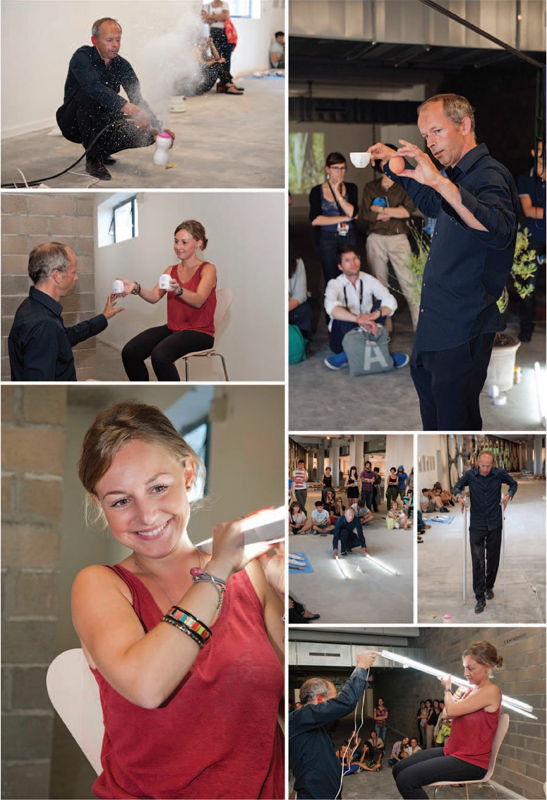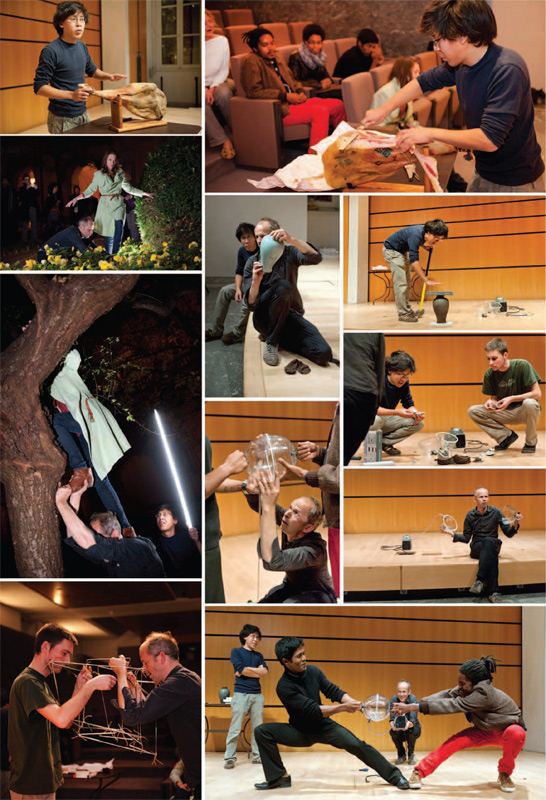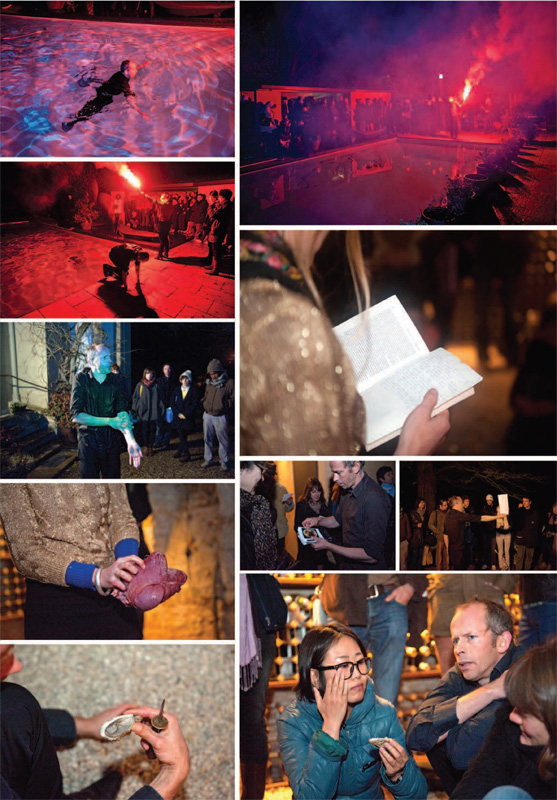For the 11e biennale de Lyon I proposed 4 classes of the school for invisibility. This project seeks to discover the possibilities of becoming less concrete, more diffuse, and of dissolving oneself without disappearing.
It exploits in particular the possibilities presented by collisions, failures and misunderstandings. Detours are important to arrive at our goal. We are inventing and trainings and visualisations of a process that we don't know yet.
The school of invisibility seeks to make abstract concepts tangible. One of these concept and probably the most evident is fusion.
The school for invisibility is a research group with variable dimensions that was created in 2005 with Frédéric Danos, Jochen Dehn, Volko Kamenski and Mateusz Kula. All Fotos: Blaise Adilon




1.FLOCKS shows the mechanisms of falling in love. I move slowly enough to not be perceptible for the movement detectors towards the women that I fall in love with. I talk about perception and whatever comes to my mind.
In collaboration with Fanny Robin.
TOUS CE QUE JE TOUCHE ME TOUCHE is another attempt to visualize fusion. I talk about historical mergers and numbers in the economic history and am covered by the products of 15 major actors in the global market. I merge with Procter and Gable, Nestlé, BP and Monsanto and others.
Skin is the first obstacle that we have to deal with in trying to become invisible. Of all the corporal reactions the reddening of the skin is the most evident, beautiful, volatile and least controlable. The act of making confidental spaces become shared spaces can provoke a change of surface colour. It's this change of state that we are interested in. Within the mechanisms that reduce distance like empathy, imitation and identification we try to find the means to provoke a reddening in a group of spectators In Collaboration with Loreto Martinez Troncoso.